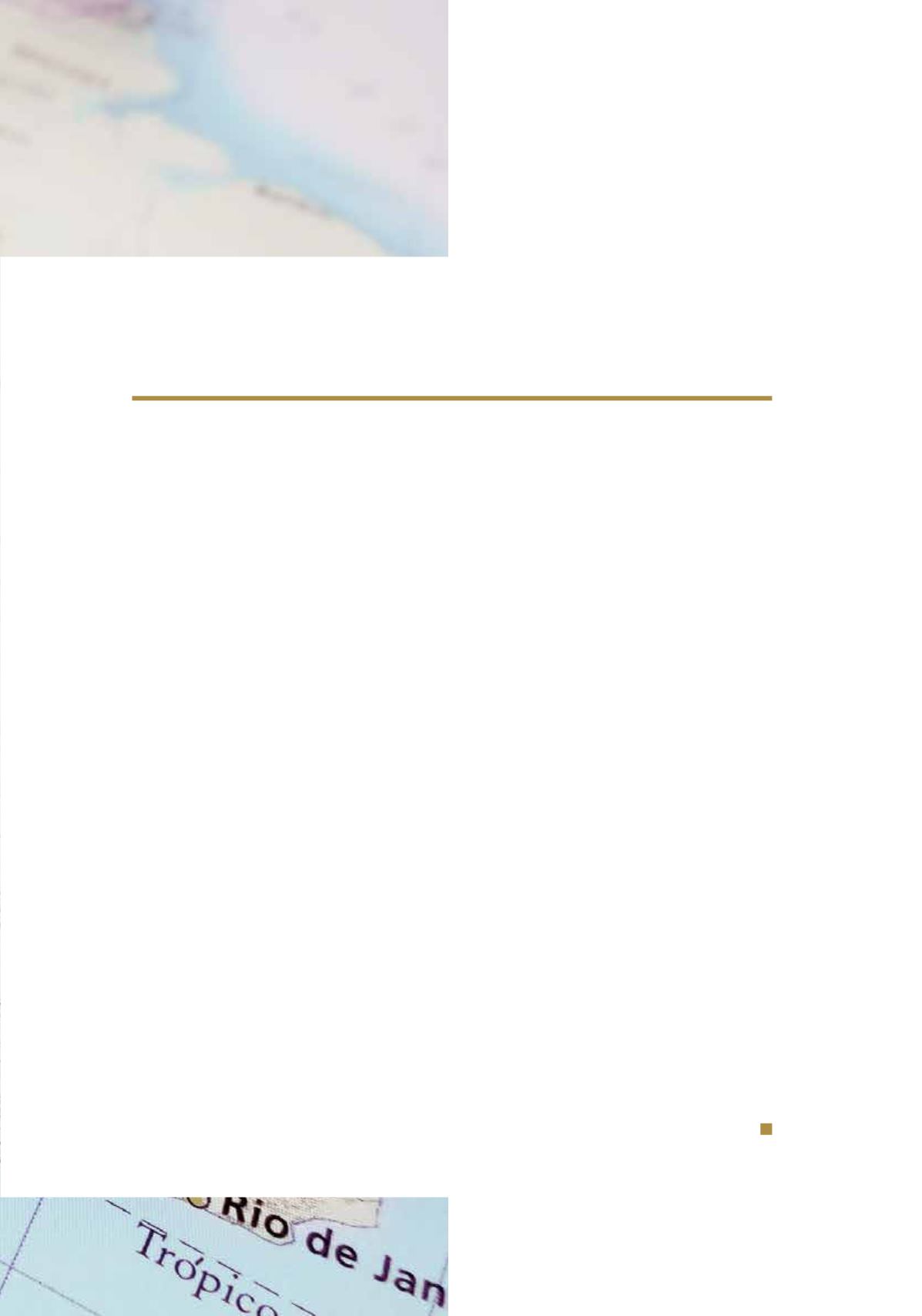

51
Eighteen years after the launch of the last
historical atlas in Brazil, Fundação Getulio Vargas,
through its School of Social Sciences (CPDOC), has
produced a new version, called
Atlas Histórico.
Brasil 500 anos. (Historical Atlas. 500 years of
Brazil.).
The school produced a contemporary,
up-to-date edition, completely aligned with new,
modern forms of study.
The atlas was first published in 1998, in the form
of booklet inserts in Isto
É
magazine and on a CD-
ROM, authored by journalist Bernardo Joffily.
The new edition was produced by CPDOC’s team
of researchers, in partnership with author and
historianMariana Joffily, of the Santa Catarina State
University (Udesc). It was also supported by the
Funding Authority for Studies and Projects (Finep).
The new atlas contains maps, images, audiovisual
media files and explanatory texts produced by
Fundação Getulio Vargas’ team of researchers. It
was enriched with entries from CPDOC’s
Dicionário
Histórico-Biográfico Brasileiro (Brazilian Dictionary
of Historical Biographies)
and other items from its
historical archives. All the materials were revised
and updated in line with a new model enabling
online consultation, making access to them
democratic and universal.
The atlas encompasses the historical period ranging
from the Portuguese voyages of discovery in the
16
th
century (before the discovery of Brazil) to the
New Republic period and then on to the end of the
Luiz Inácio Lula da Silva government.
It also contains material from the Brazilian Institute
of Geography and Statistics, IBGE, the Institute for
Applied Economic Research (Ipea), the National
Indian Foundation (Funai) and other institutions,
in order to enrich the data, graphs and maps
presented in it.
Access to this information is completely free.
For students, the atlas is expected to be a useful
instrument for school or academic work. For
teachers, it will be a robust source for preparing
classes, enriched by the texts produced by
CPDOC’s team.
The digital version’s advantages include new
historical periods, which can be added to the atlas
more easily, facilitating the updating of information.
Another positive aspect is the possibility to project
maps and infographics, for example. Using the
digital version, all the content on a map may be
presented gradually, as a teacher gives a class.
The new atlas provides the general public with a
valuable study tool that will hopefully stimulate
curiosity and the desire to learn about Brazil’s history.
The entire content of the
Historical Atlas
is available,
in Portuguese, at
fgv.br/cpdoc/atlas.















